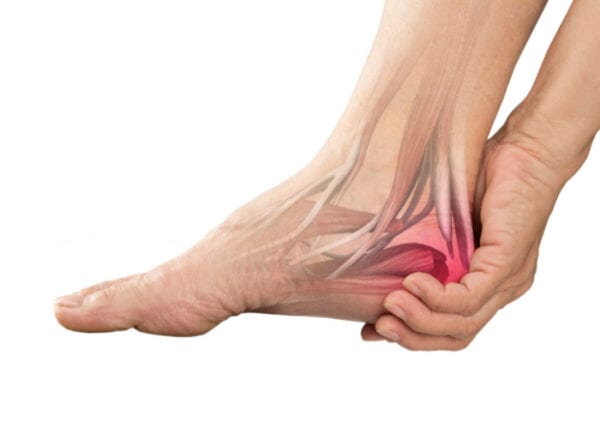Plantar Fascia Release Surgeons
Are you experiencing heel pain that is severe enough to affect sports participation and even walking? If so, you may have a foot condition called plantar fasciitis. Plantar fasciitis is often treated without surgery, however severe cases may need surgical treatment called plantar fascia release. Plantar fascia release surgeons, Doctors C. Thomas Haytmanek and Jonathon Backus have diagnosed and treated many patients in Vail, Colorado, and surrounding Eagle, Vail, and Gore Mountain Ranges who have severe symptoms of plantar fasciitis. To find out your options to relieve heel pain, contact The Steadman Clinic’s Sports Foot and Ankle team today!

Does your heel hurt?
Pain below the heel is most commonly caused by plantar fasciitis. The most common cause of heel pain and hence, approximately 2 million patients are treated for plantar fasciitis each year. It is estimated that 1 in 10 people experience plantar fasciitis at some point in their life.
Overworking the tissue band (facia) connecting the heel across the foot to the base of the toe, (often done when running or jumping) can cause inflammation. This pain radiates from under the heel and is felt when the fascia thickens as a result of micro-tears over time. Pain from plantar fasciitis may be mild, to begin with, but can increase in intensity and will flare up with overuse.
Heel pain such as plantar fasciitis is most commonly caused by wear and tear and is more frequent among runners, dancers, people who play sports requiring jumping, or people who spend an excessive amount of time on their feet. It can also be caused by sudden damage. In many cases, it is a combination of a sudden, sometimes mild injury, and then continued use. There is a higher risk of plantar fasciitis among those who are obese, have jobs that require long periods of standing, or wear unsupportive shoes.
How is heel pain treated?
The feet are arguably one of the hardest working parts of the body. Every day we land on our two feet with the full force of our body weight during normal gait. Additionally, we run, jump, dance, and otherwise add additional force to our feet and especially our heels. Many people experience symptoms of heel pain and either try to ignore the pain or hope that it goes away on its own. In some cases, rest is enough to allow the body to heal. In other instances, there is a larger cause of heel pain and continued daily use can lead to a chronic condition. Heel pain can be caused by several issues and it is ideal to be seen by a specialist who can help properly diagnose the cause and help develop an effective treatment strategy. The doctors at Sports Foot and Ankle specialize in heel pain treatment for patients from Vail, Colorado, and the surrounding Eagle, Vail Mountain Ranges.

How is heel pain diagnosed?
To determine the cause of a patient’s heel pain one of our doctors will ask questions to gain a better understanding of the patient’s history and potential causes. They will examine the patient’s heel and the surrounding area testing for tenderness, swelling, or other signs of injury. The patient may be asked to perform different movements, walk, or do other tests to help identify the cause of the heel pain. In some cases, the doctor may request additional imagine such as an MRI.
What is plantar fascia release?
If plantar fasciitis is the confirmed diagnosis, and the patient has not been helped by more conservative treatments, our surgeons may recommend plantar fascia release. In this common surgery for heel pain, a small incision is made in the facia to release it from the heel bone and reduce the tension present. If a bone spur is present, this is typically removed at the same time. The fascia then heals in an elongated position with less tension.
By releasing the tension in the plantar facia tissue your surgeon is able to promote foot flexibility and reduce inflammation, which will help relieve chronic heel pain.
How is plantar fascia release performed?
Plantar fascia release is typically performed as an outpatient procedure requiring general anesthesia and a regional block. Depending on the patient’s particular characteristics, a plantar facia release can be done either endoscopically or in open surgery. Incisions are made near the facia to release the tension from the heel. If bone spurs are present, those can also be removed during the treatment. Sutures will be used to close the incisions and the patient will be placed in a splint or given a post-operative shoe to stabilize the foot.
How long does it take to recover from plantar facia release?
Most patients’ total time for recovery is between six to twelve weeks. The sutures are typically removed about two weeks following surgery and patients can begin to bear weight and slowly increase their range of motion. For optimum success, patients should avoid strenuous activities during the recovery period, stretch as instructed by their surgeon, and wear recommended footwear.
